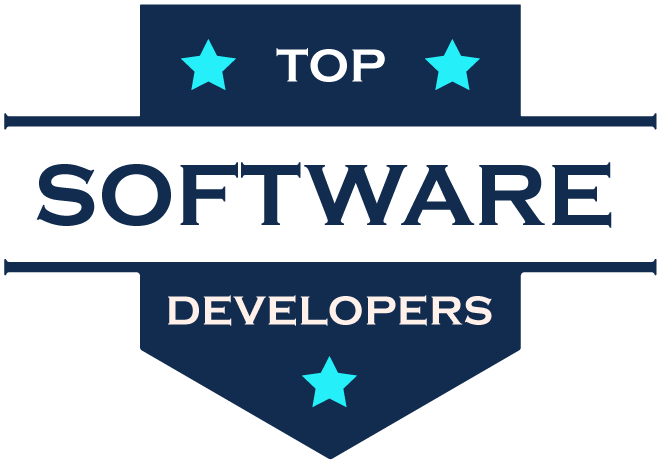今日のデータ主導の世界では、データを視覚化することは、洞察を導き出し、情報に基づいた意思決定を行うために極めて重要です。強力なプログラミング言語であるPythonは、それぞれ独自の強み、柔軟性、機能を持つ、幅広いデータ可視化ライブラリを提供しています。
シンプルな折れ線グラフ、インタラクティブなダッシュボード、複雑な3Dビジュアライゼーションの作成など、Pythonにはその仕事に適したツールがあります。2025年の展開として、Pythonのビジュアライゼーションを探求してみましょう。 Pythonデータ可視化ライブラリ ベスト10 マスタリングを考えるべきだ。
図書館とは?
プログラミングでは 図書館 は あらかじめ書かれたコード集 これは、開発者がゼロからコードを書くことなく、一般的なタスクを実行するために使用できるものです。これは、インポートして自分のプロジェクトで使用できる、既製の関数、モジュール、クラスでいっぱいのツールボックスを持つようなもので、時間と労力を節約できる。
例えば パイソン:
- の Matplotlib ライブラリはチャートやグラフの作成に役立ちます。
- の パンダ ライブラリはデータテーブルを扱うのに最適です。
- の NumPy ライブラリーは複雑な数学と配列を効率的に処理する。
それを分解してみよう:
なぜ図書館を利用するのか?
- 時間を節約できる: 車輪を再発明する必要はなく、ライブラリをインポートしてその機能を使うだけでいい。
- 生産性を高める: 低レベルのコードの詳細ではなく、プロジェクトのロジックに集中してください。
- 信頼性を確保する: ライブラリーは通常、専門家によってテストされ、保守されている。
- 機能を拡張: ライブラリーは、データ可視化、機械学習、ウェブ開発などの高度な機能を提供する。
データ可視化ツールとは?
データ可視化ツール は、次のような目的で設計されたソフトウェア・アプリケーションやライブラリです。 生データを視覚的な表現に変換する - チャート、グラフ、マップ、ダッシュボードなど、複雑なデータを理解しやすくし、分析しやすくする。
これらのツールは、数字やデータセットをより詳細なものに変換することによって、パターン、トレンド、洞察を明らかにするのに役立ちます。 直感的で視覚的.
ここでは、データ可視化ツールが一般的に何をするのかについて説明する:
- データをビジュアルなフォーマットに変換する (棒グラフ、折れ線グラフ、円グラフ、ヒートマップ、散布図など)。
- 大規模なデータセットを扱う 相関関係や異常値を見つけやすくなる。
- カスタマイズ・オプションの提供 - 色、ラベル、双方向性など、視聴者に合わせて視覚的出力を調整する。
- リアルタイムのデータ可視化をサポート ライブ・ダッシュボードとパフォーマンス・モニタリングのために。
- 地理データを視覚化する (人口ヒートマップや配送ルートなど)。
一般的なデータ可視化ツールの種類
- プログラミング・ライブラリ - 例えば、Matplotlib、Seaborn、Plotly(開発者やデータ科学者向け)。
- BI(ビジネスインテリジェンス)ツール - 例:Tableau、Power BI、Looker(ビジネス分析とレポート用)。
- 表計算ベースのツール - 例:Google Sheets、Excel(迅速なチャートやデータ操作のため)。
- 特殊な視覚化ツール - 例えば、カスタムWebビジュアライゼーションにはD3.js、ネットワークグラフにはGephi、マップにはFolium。
2025年版 Pythonデータ可視化ライブラリのベスト10
1.Matplotlib
最高だ: 基本的なプロット、静的チャート、基本的なビジュアライゼーション。
Matplotlibは、Pythonエコシステムの定番であり続けている。汎用性の高さで知られるこのライブラリは、静的、アニメーション、インタラクティブなビジュアライゼーションを幅広く作成できる。
主な特徴
- 折れ線グラフ、棒グラフ、散布図、ヒストグラムなどをサポート。
- 堅牢なAPIで高度にカスタマイズ可能。
- NumPyやpandasとシームレスに統合。
- 様々なフォーマットでのエクスポートに対応(PNG、SVG、PDFなど)。
使用例 科学的なプロット、学術的な研究、素早く視覚的なドラフトに最適。
2.シーボーン
最高だ: 統計データの可視化。
Matplotlibの上に構築されたSeabornは、複雑な統計ビジュアライゼーションを単純化し、美的に見えるようにする。
主な特徴
- 魅力的でプロフェッショナルなプロットのための組み込みテーマ。
- ヒートマップ、バイオリンプロット、回帰プロットなどの複雑な可視化を作成するための高レベル関数。
- pandas DataFramesをネイティブにサポート。
- カテゴリーデータの取り扱いに優れている。
使用例 データ分析プロジェクトでデータの分布や関係を調べるのに最適。
3.プロットリー
最高だ: インタラクティブなビジュアライゼーションとダッシュボード。
Plotlyは、シンプルな折れ線グラフから複雑な3Dプロットまで、魅力的でインタラクティブなチャートを作成できることで人気を博している。
主な特徴
- 多様なチャートタイプ(散布図、棒グラフ、円グラフ、チョロプスマップなど)をサポート。
- HTMLやJavaScriptのようなウェブフレンドリーなフォーマットへのエクスポート。
- アニメーションとカスタムツールチップのビルトインサポート。
- インタラクティブなウェブアプリケーションを構築するためのDashフレームワークの統合。
使用例 インタラクティブなレポートやダッシュボードの作成に最適です。
4.ボケ
最高だ: インタラクティブなビジュアライゼーション ウェブアプリケーション.
Bokehは、大規模なデータセットにも対応できる、インタラクティブでウェブ対応のビジュアライゼーションを作成するために設計されています。
主な特徴
- パン,ズーム,ホバー機能を備えた高度にインタラクティブなビジュアライゼーションの作成が可能.
- リアルタイムのストリーミングデータをサポート。
- FlaskやDjangoと統合し、ウェブアプリケーションに組み込むことができます。
- HTMLとJavaScriptに出力。
使用例 データ駆動型のウェブ・アプリケーションやリアルタイムのデータ監視に最適。
5.アルタイル
最高だ: 宣言的で簡単に作成できる統計ビジュアライゼーション。
Altairは、簡潔で人間が読めるコードでビジュアライゼーションを定義できる、そのシンプルさと宣言的アプローチで際立っています。
主な特徴
- Vega-Liteに基づく直感的な構文。
- データ変換(集計、ビン化、フィルタリング)を簡単に処理。
- インタラクティブなチャートをサポート。
- 大規模なデータセットを最適化されたレンダリングで処理します。
使用例 ラピッドプロトタイピングや探索的データ分析に最適。
6. ggplot (Plotnine)
最高だ: グラフィックスタイルの視覚化の文法(Rのggplot2に触発された)。
Rのファンのために ggplot2パイソンの プロトニン (ggplot)ライブラリは、視覚化に同じ構造化されたレイヤーアプローチをもたらす。
主な特徴
- レイヤー化されたビジュアライゼーションを作成するためのグラフィックスフレームワークの文法。
- 統計的変換をサポート。
- 複雑なプロットのためのエレガントな構文。
- pandas DataFramesとの強力な統合。
使用例 ggplot2に慣れている人や、階層化された体系的な可視化を求めている人に最適である。
7.ピガール
最高だ: 軽量でインタラクティブなSVGチャート。
Pygalは、高度にカスタマイズ可能でインタラクティブなSVGチャートの作成に特化しており、軽量でウェブとの統合に最適です。
主な特徴
- ツールチップ付きの SVG グラフを生成します。
- ライン、バー、パイ、レーダーなどをサポート。
- 軽量、高速レンダリング。
- ウェブフレンドリーなフォーマットに簡単にエクスポート可能。
使用例 ウェブコンテンツに素早くインタラクティブなビジュアライゼーションを埋め込むのに最適です。
8.フォリウム
最高だ: インタラクティブな地図と地理空間データ。
地理データを扱っている場合、 フォリウム の力を基盤としている。 リーフレット 美しいインタラクティブな地図を作成する。
主な特徴
- 異なる地図タイルをサポート(OpenStreetMap、Stamenなど)。
- マーカー、ポップアップ、チョロプスレイヤーを簡単に追加できます。
- GeoJSONデータをサポート。
- ナビゲーションのためのズームとパンコントロール。
使用例 位置情報分析や地図を使ったビジュアルなストーリーテリングに最適。
9.Pyplot (Matplotlib の一部)
最高だ: Matplotlibの機能を簡素化。
技術的にはMatplotlibの一部だが、Pyplotは最小限のコードで基本的なグラフを作成するための簡素化されたインターフェースを提供する。
主な特徴
- 折れ線グラフ、棒グラフ、散布図、ヒストグラムグラフのクイックセットアップ。
- MATLABにインスパイアされたシンプルな構文。
- 小さなプロジェクトや指導に適している。
使用例 初心者の方や、複雑なカスタマイズをせずに素早く視覚化したい場合に最適です。
10.ホロビュー
最高だ: 複雑なビジュアライゼーションの簡素化。
Holoviewsは、柔軟性やパワーを失うことなく、データ可視化を簡素化することを目的としている。出力レンダリングのためにBokeh、Matplotlib、Plotlyとシームレスに統合されています。
主な特徴
- ダイナミックローディングで大規模データセットをサポート。
- シンプルな構文で、定型的なコードを削減。
- インタラクティブなウィジェットを提供。
- チャート、ヒートマップ、ネットワークなどをサポート。
使用例 迅速でハイレベルな視覚的表現を必要とするデータサイエンティストに最適。
Pythonの未来は?
の Pythonの未来 は信じられないほど明るく、有望に見える!さまざまな分野に分けて考えてみよう:
1.AIと機械学習におけるPython
Pythonはすでに、次のような場面で使われる言語となっている。 AI、機械学習、ディープラーニングのような強力なライブラリのおかげである。 TensorFlow、PyTorch、scikit-learn。.AI技術が進歩するにつれて、Pythonのシンプルさと汎用性は最前線で活躍し続けるだろう。 ジェネレーティブAI そして 自然言語処理(NLP).
今後の動向に注目:
- Pythonを中心に構築された、より専門的なAIフレームワーク。
- 自律走行システム(自動運転車、ドローンなど)での使用増加。
- 大規模ニューラルネットワークの性能向上
2.ウェブ開発の進化
Pythonのウェブフレームワークは ジャンゴ そして フラスコ は依然として超人気だ。ウェブ・テクノロジーの進化に伴い、Pythonはより多くの機能を提供することが期待されている。 サーバーレスアプリケーション, プログレッシブ・ウェブ・アプリケーション(PWA)、 そして AIを統合したウェブ体験.
次はどうする?
- より速く、よりスケーラブルなフレームワーク。
- WebAssemblyの組み込みサポート(ブラウザベースのアプリケーションの高速化)。
- より簡単なクラウドサービスの統合(AWS、Google Cloud、Azure)。
3.データサイエンスとビッグデータ
パイソンが優勢 データサイエンス - そして、それはすぐには変わらない。次のような図書館がある。 pandas、NumPy、Matplotlib、 そして シーボーン PolarsやDaskのような新しいものは、より大きなデータセットをより速く処理するために出現している。
将来のシフト
- パフォーマンスに最適化されたデータ操作ライブラリが増えた。
- リアルタイムのデータパイプラインやストリーミング分析との統合を強化。
- データの視覚化とストーリーテリングをより強力にサポート。
4.自動化、スクリプト、DevOps
Pythonの多用途性は次のような場面で光る。 オートメーション - 単純なスクリプトから本格的なDevOpsパイプラインまで(次のようなツールのおかげで)。 アンシブル そして 生地).企業がより多くのプロセスを自動化するにつれて、Pythonの役割は大きくなるだろう。
イノベーションの到来
- AIを活用した自動化機能の強化(自己修復インフラなど)。
- CI/CDパイプラインとの統合を改善。
- コンテナ(Docker、Kubernetes)を管理するためのより良いツール。
5.ゲーム開発と3D
Pythonはゲームのための#1言語ではないが、以下のようなライブラリがある。 パイゲーム そして Godotエンジン(Pythonスクリプト) が人気を集めている。Pythonの使いやすさは、より多くのインディーズ開発者がカジュアルゲームや教育ゲームを作るきっかけになるかもしれない。
何が起こるかわからない:
- Pythonゲームエンジンのパフォーマンスが向上。
- VR/ARアプリケーションやシミュレーションでの利用が増える。
6.パフォーマンスの改善
Pythonの最大の批判の一つは、常に次のようなものだ。 スピード.しかし、次のようなプロジェクトがある。 PyPy (より高速なインタプリタ)と サイソン (PythonをCにコンパイル)、パフォーマンスは徐々に向上している。
将来の展望
- 並行処理とマルチスレッドのサポートが向上。
- より高速で最適化されたインタプリタとジャスト・イン・タイム(JIT)コンパイラ。
- より多くのハイブリッド言語(例えば、パフォーマンスのためにPythonとRustやC++を組み合わせるなど)。
7.Python 4.0 - 何を期待する?
公式発表はないが パイソン4.0 いずれ現れるかもしれない。以下は、その可能性を推測する人々の意見である:
- パフォーマンスとメモリ管理の強化。
- タイピングサポートの向上 (現在のオプショナル・タイプのヒントを基に)。
- より多くの関数型プログラミング機能。
- 構文が整理され、エラー処理が改善された。
最終的な感想:Pythonの将来は安泰か?
そうだ! Pythonの多用途性、コミュニティーのサポート、適応性により、今のところ将来性はある。
Pythonは、AIからウェブ、データ、自動化まで、技術トレンドとともに進化しており、開発者や企業、そして新規参入者にとってさえ、Pythonが最良の選択肢であり続けることを保証している。
に飛び込みましょうか? Pythonに代わる新たな選択肢 または Pythonと新しい言語との比較 ような さび または 行く?
こちらもお読みください: 機械学習に最適な Python ライブラリ 20 選
最終的な感想
適切なデータ可視化ライブラリの選択は、迅速なチャートの作成、インタラクティブなダッシュボードの構築、地理空間データの可視化など、特定のニーズによって異なります。以下のようなライブラリがあります。 Matplotlib そして シーボーン は依然として基礎的なビジュアライゼーションのトップ・チョイスである。 プロトリー, ボケ、 そして アルタイル インタラクティブ性と使いやすさをリードする。
オーダーメイド データ可視化ソリューション そして最先端のウェブ開発、 カーマテック の専門知識を提供する。 パイソン そして データサイエンス データ駆動型の意思決定を支援します。お客様のデータをパワフルで視覚的な洞察に変える方法について、今すぐお問い合わせください。
カルマテックを選ぶ理由
- エキスパート開発者 Pythonの深い経験を持つ。
- アジャイル・アプローチ より迅速な納品と適応性のために。
- フルサイクル・サポート - アイデアから展開、メンテナンスまで。
- イノベーションに注力 - 競合他社に先んじることができます。
よくある質問
1.データ可視化の初心者に最適なPythonライブラリは?
初心者には、MatplotlibとSeabornが最も始めやすい。Matplotlibは基本的なプロット機能を提供し、Seabornはよりクリーンで魅力的なデザインで統計的可視化を簡素化する。どちらもpandasとシームレスに統合されており、初心者に優しい。
2.インタラクティブなデータ視覚化のための最も強力なライブラリは何ですか?
インタラクティブ性ではPlotlyとBokehがトップ・チョイスだ。Plotlyはレスポンシブでウェブフレンドリーな出力で幅広いチャートをサポートし、Bokehはインタラクティブなダッシュボードの構築やリアルタイムデータの処理に優れている。
3.地図や地理空間ビジュアライゼーションの作成に最適なライブラリは?
Foliumは地理データ用のライブラリです。Leaflet.jsをベースに構築されており、マーカー、ポップアップ、チョロプスのビジュアライゼーションをサポートし、美しくインタラクティブなマップを簡単に作成することができます。
4.複数のPython可視化ライブラリを一緒に使うことはできますか?
そうだ!多くのライブラリが連携して動作します。例えば、SeabornはMatplotlibのプロットを向上させることができますし、HoloviewsはBokehやPlotlyと統合してより高度な出力を得ることができます。それぞれの強みに基づいてライブラリを選択し、それらを組み合わせて目的の結果を得ましょう。
5.大規模データセットに最適なPython可視化ライブラリは?
HoloviewsとPlotlyは、大規模なデータセットを効率的に処理し、ダイナミックローディングと最適化されたレンダリングを提供する。膨大なデータセットやストリーミングデータを扱うのであれば、Bokehもリアルタイムパフォーマンスで強力な候補となる。













